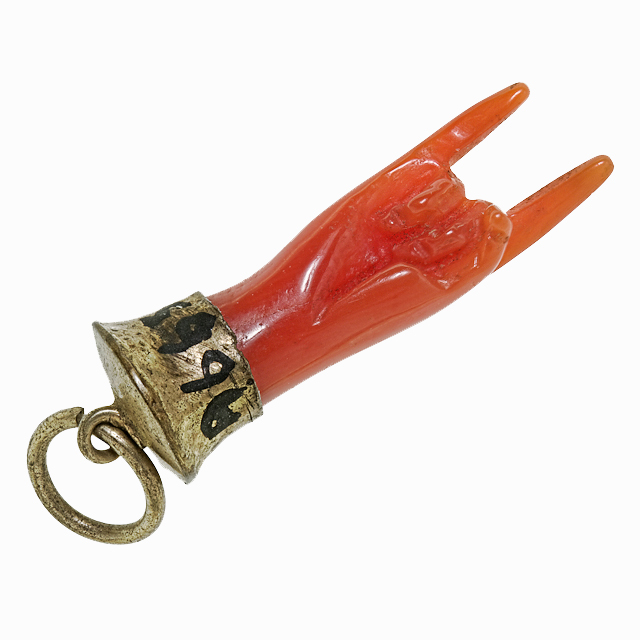Horned Hand, Corsica

Transferred from the Wellcome Institute in 1985; 1985.52.2
Mano cornuta, or ‘horned hand’ amulets are thought to be of ancient Italian origin and are worn as protection against the harmful glance of the Evil Eye. Mano cornuta is one of two hand gestures that are commonly used for this purpose, the second being the mano fica, or ‘fig hand’. The horned hand, which resembles a horned animal, is made by extending the index and little finger while clenching the other two fingers and thumb, while the fig hand is made by placing the thumb between the index and second finger.
This minute mani cornute is from Ajaccio, Corsica, and is made of coral. Coral horned hands were especially popular in the Mediterranean, but they could also be made of mother-of-pearl, silver, gold, amber, or lava. Sparkling and brightly coloured, their striking appearance was thought to divert attention away from the wearer so that she or he could escape from the dangerous glance of the Evil Eye unharmed.
The glance itself is thought to be caused by excessive admiration or envy, and children and domestic animals are believed to be most at risk. Belief in the Evil Eye – the power of certain people and animals to inflict (often unwittingly) malady or misfortune on anything they look at – is one of the world’s oldest and most widespread superstitions.






